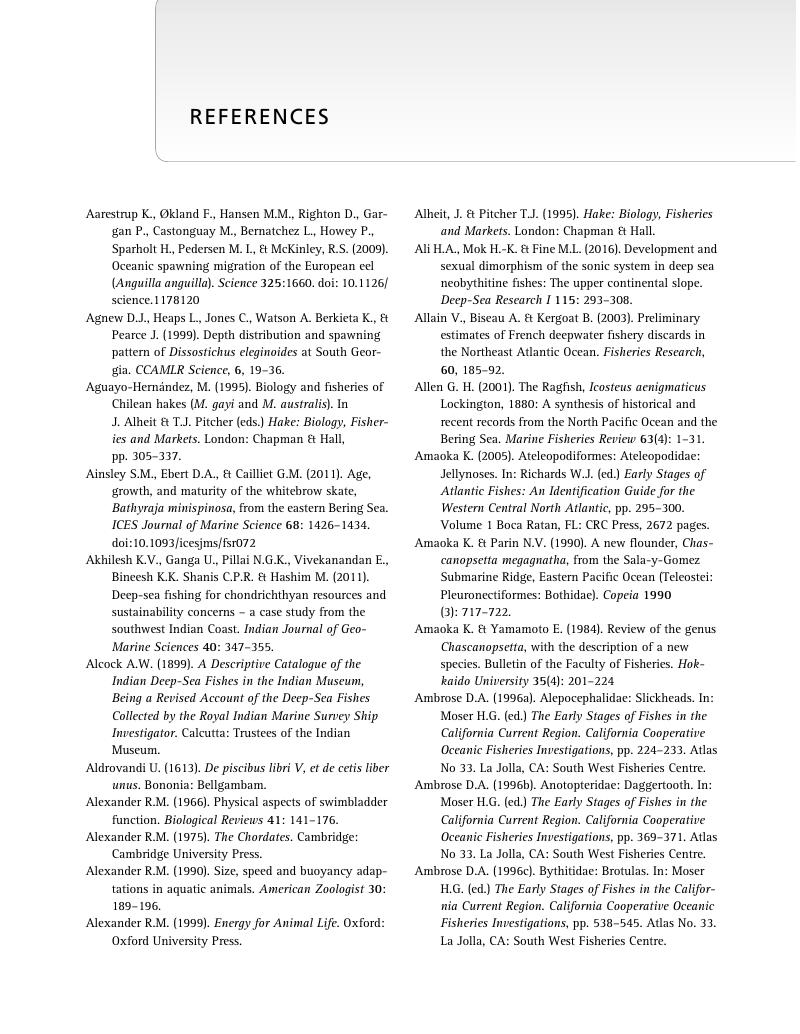Book contents
- Deep-Sea FishesBiology, Diversity, Ecology and Fisheries
- Deep-Sea Fishes
- Copyright page
- Dedication
- Contents
- Preface
- 1 Introduction
- 2 Colonisation of the Deep Sea by Fishes
- 3 Adaptations to the Deep Sea
- 4 Systematic Description of Deep-Sea Fishes
- 5 The Deep-Sea Fish Faunas
- 6 Deep-Sea Fisheries and Conservation
- Epilogue
- Appendix List of Deep-Sea Fish Families and Their Taxonomic Classification
- References
- Index
- References
References
Published online by Cambridge University Press: 24 August 2017
- Deep-Sea FishesBiology, Diversity, Ecology and Fisheries
- Deep-Sea Fishes
- Copyright page
- Dedication
- Contents
- Preface
- 1 Introduction
- 2 Colonisation of the Deep Sea by Fishes
- 3 Adaptations to the Deep Sea
- 4 Systematic Description of Deep-Sea Fishes
- 5 The Deep-Sea Fish Faunas
- 6 Deep-Sea Fisheries and Conservation
- Epilogue
- Appendix List of Deep-Sea Fish Families and Their Taxonomic Classification
- References
- Index
- References
Summary

- Type
- Chapter
- Information
- Deep-Sea FishesBiology, Diversity, Ecology and Fisheries, pp. 415 - 469Publisher: Cambridge University PressPrint publication year: 2017

